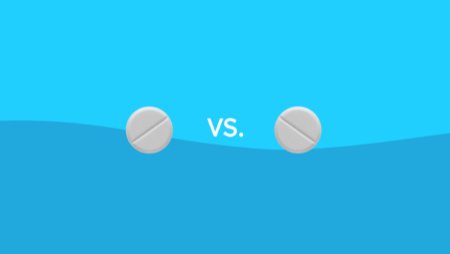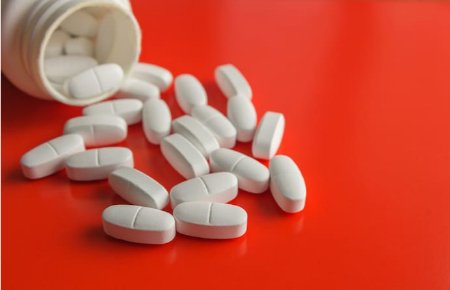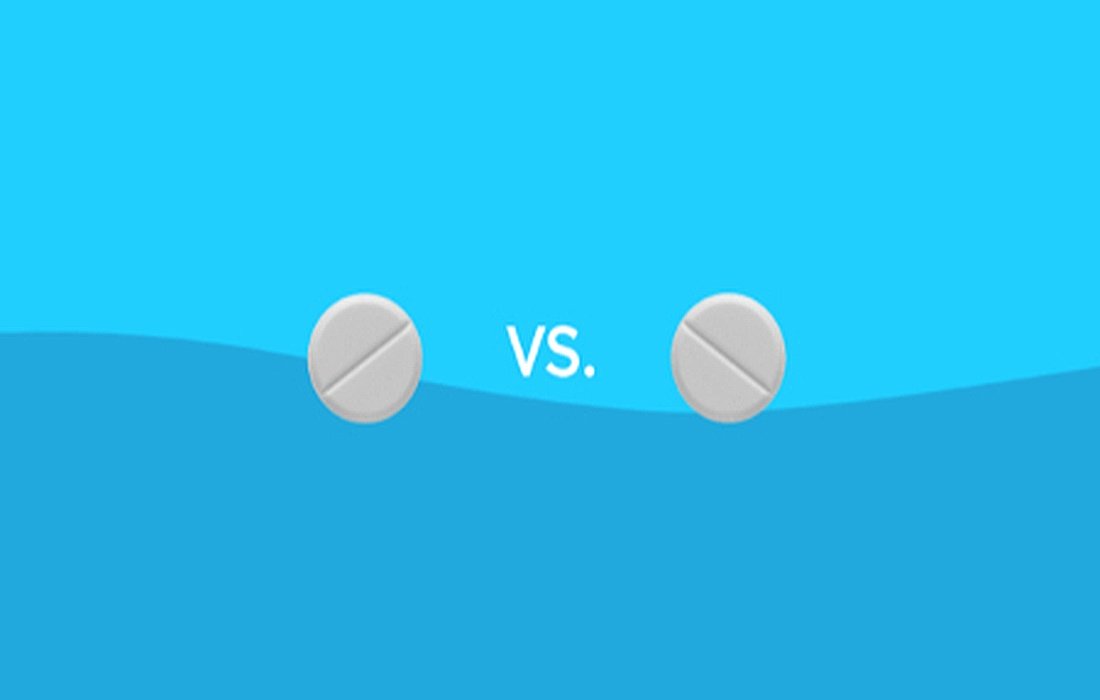
Antihistamines and corticosteroids are two frequently used medications for treating allergies.
Key Differences: Antihistamines vs. Corticosteroids
Antihistamines and corticosteroids are both medications used to treat allergies. They both affect the immune system. Antihistamines are typically used for common allergies. They work by reducing the effects of histamine production in the body. Histamine is a natural chemical involved in the immune system’s function. Corticosteroids are powerful anti-inflammatory drugs that work by reducing inflammatory processes in the body and decreasing the immune system’s overactivity.
In this article, you will learn about types of antihistamines, types of corticosteroids, the differences between antihistamines and corticosteroids, significant side effects, and potential drug interactions.

Antihistamines are usually used to treat allergy symptoms.
What are antihistamines?
Antihistamines are a class of drugs that block the effects of histamine in the body. There are two types of antihistamines. The type of antihistamine needed depends on the reaction or condition being treated.
Types
• H1 blockers are a type of antihistamine used to treat allergies. This group of antihistamines also treats:
Common cold symptoms
Short-term insomnia
Anxiety
Warning:Overdosing on first-generation antihistamines can cause toxicity and may be fatal.
• The second type of antihistamine is known as H2 blockers or H2 receptor antagonists. H2 blockers are used to treat digestive diseases. H2 blockers may be used to treat the following conditions or symptoms:
• Chronic acid reflux and heartburn, or gastroesophageal reflux disease (GERD)
• Stomach ulcers
• Gastritis
• Nausea
• Vomiting
• Motion sickness
• Zollinger-Ellison syndrome (tumors grow in the pancreas or duodenum, the upper part of the small intestine)
• Heartburn
Common examples of H2 blockers include:
• Axid (Nizatidine)
• Pepcid (Famotidine)
• Zantac 360 (Famotidine)
What are corticosteroids?
Corticosteroids are steroid medications used to treat overactive immune system activity.
Types
• Glucocorticoids: Glucocorticoids are synthetic versions of natural glucocorticoid hormones found in the body. They help prevent cellular and organ damage caused by excessive inflammation by reducing the immune system’s activity.
Uses of glucocorticoids
Glucocorticoids are used to treat chronic inflammatory diseases such as:
– Rheumatoid arthritis
– Inflammatory bowel disease (IBD), including Crohn’s disease and ulcerative colitis
– Lupus
– Vasculitis (inflammation of blood vessels)
– Asthma
– Chronic obstructive pulmonary disease (COPD)
Examples of glucocorticoids include:
– Prednisone
– Delasone (Prednisolone)
– Medrol (Methylprednisolone)
– Kenalog (Triamcinolone)
– Mineralocorticoids
Mineralocorticoids are a class of drugs designed to help regulate water and salt in the body. They act on the adrenal cortex of the adrenal glands. Mineralocorticoids are used to treat adrenal fatigue and kidney disease.

Corticosteroids relieve allergy symptoms by reducing inflammation.
What is the difference between antihistamines and corticosteroids?
Both of these drugs reduce immune system activity. The difference between antihistamines and corticosteroids lies in the chemical processes they target. Antihistamines target histamines to lessen their impact on the immune system and inflammatory processes. Corticosteroids act by reducing upstream chemical reactions that cause inflammation.
Side Effects
The following are side effects of antihistamines and corticosteroids.
Side Effects of Antihistamines
The side effects associated with antihistamine use vary depending on whether you are using first or second-generation antihistamines. Side effects will also vary depending on whether you are using H1 or H2 blockers. Nasal antihistamine side effects may include sneezing and upper respiratory infections.
First-generation antihistamines have the following common side effects:
– Drowsiness or extreme fatigue
– Dry mouth and eyes
– Visual problems
– Low blood pressure
– Thickening of mucus in the airways, making breathing harder
– Rapid heartbeat
– Urinary or bowel problems (i.e., constipation)
While side effects may occur, a review of medical literature showed that most second-generation antihistamines are well tolerated, and serious side effects are rare. Side effects associated with second-generation antihistamines include:
• Headache
• Cough and sore throat
• Fatigue
• Abdominal pain or discomfort
• Nausea and vomiting
Side effects of H2 blocking antihistamines are rare but may include:
• Fatigue or drowsiness
• Sensitivity or muscle pain, including chest swelling
• Joint pain
• Headache
• Dizziness
• Confusion may also occur in elderly patients.
Side Effects of Corticosteroids
Short-term side effects of using corticosteroids include:
– Fluid retention leading to swelling
– Weight gain
– High blood sugar (hyperglycemia)
– Difficulty controlling diabetes
Experts say that the anti-inflammatory properties of glucocorticoids are beneficial for short-term use in most cases, but chronic and systemic use typically causes side effects and leads to reduced drug sensitivity.
Long-term or high-dose side effects of corticosteroids can include a range of side effects that lead to other health issues, including:
– Osteoporosis or severely reduced bone density
– Insulin resistance
– High blood pressure
– Muscle weakness or atrophy
– Severe infections due to reduced immune system activity
– Symptoms of Cushing’s syndrome
– Stomach ulcers
– Neurological and psychological disorders

Corticosteroids have more side effects than antihistamines.
Drug Interactions
The following are drug interactions to be aware of when taking antihistamines and corticosteroids. Always consult with a healthcare provider before starting any new medications.
Antihistamines
Antihistamines interact with other drugs and substances and can cause drowsiness or extreme fatigue. This includes over-the-counter medications and strong medications such as:
• Sleep aids and other analgesics
• Pain medications
• Muscle relaxants
• Antidepressants
• Anticonvulsants
Antihistamines can also interact with antipsychotics and some antiemetic medications, like Compro (Prochlorperazine) and Promethazine DM (Promethazine and Dextromethorphan).
Corticosteroids
Corticosteroids may interact with medications and affect the digestive system and metabolism. These include Nizoral (Ketoconazole) and Norvir or Kaletra (Ritonavir).
If you’re unsure if a medication interacts with antihistamines or corticosteroids, you can ask a pharmacist to review your list of medications.
Warning:Taking more than one type of antihistamine at the same time without a doctor’s approval is not safe. Overdosing on antihistamines can cause seizures, hallucinations, and heart attacks and can be fatal. Additionally, antihistamines and corticosteroids may contain extra medicinal ingredients like decongestants. Taking more than one decongestant increases the risk of overdose. Always check the labels of new and old medications to avoid doubling doses.

Antihistamines are usually used for short-term treatment of allergies.
Frequently Asked Questions about the Difference between Antihistamines and Corticosteroids
1. Are antihistamines and corticosteroids the same?
No. Antihistamines and corticosteroids are not the same. Antihistamines are drugs that reduce histamine activity related to allergies. Corticosteroids are drugs that reduce immune activity associated with chronic conditions that cause chronic inflammation.
2. Is it okay to take antihistamines and corticosteroids together?
Generally, it is okay to take antihistamines and corticosteroids together, depending on symptoms and if a doctor recommends it. However, taking more than one antihistamine at a time can lead to dangerous health complications unless closely monitored by a healthcare provider.
3.Are antihistamines and corticosteroids safe during pregnancy?
Some antihistamines and/or corticosteroids are recommended for treating certain conditions during pregnancy. Before using any medication during pregnancy, it’s important to ask your doctor.
4. Are nasal steroids better than antihistamines for nasal allergies?
Yes. Research shows that nasal steroids are better than antihistamines for reducing nasal allergy symptoms or allergic rhinitis. Nasal steroids performed better in improving sleep, daytime drowsiness, sneezing, itching, and congestion. This indicates that nasal steroids may be the first choice for treating nasal allergies.
5. Do antihistamines help reduce inflammation?
Yes, antihistamines help reduce inflammation. Antihistamines reduce inflammation by blocking histamine receptors associated with the immune system’s inflammatory responses. Research also indicates they work to reduce inflammation by suppressing various pathways related to inflammation.
6. Which medication is better for allergies?
The best medication for allergies depends on the cause of the allergic reaction. However, generally, second-generation antihistamines and nasal steroids are the best for allergies. Consult with your healthcare provider or pharmacist for more information related to your health needs.
Summary
Antihistamines and corticosteroids reduce immune system activity. Antihistamines block the action of histamine, which causes allergies. Corticosteroids affect additional chemicals involved in the immune system and inflammatory processes. Types of antihistamines include first and second generations, as well as nasal forms. Types of corticosteroids include synthetic corticosteroids and mineralocorticoids.
The side effects of antihistamines depend on the type; second-generation antihistamines have fewer side effects than first-generation drugs. Corticosteroid side effects include fluid retention and weight gain. Antihistamines interact with other medications, causing drowsiness, antipsychotics, and some antiemetic drugs. Corticosteroids interact with drugs affecting metabolism. If you have questions about specific drug interactions with antihistamines or corticosteroids, consult a pharmacist.
Compiled by:Health Section of SelMagz







